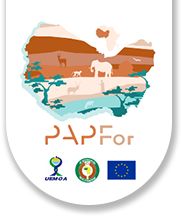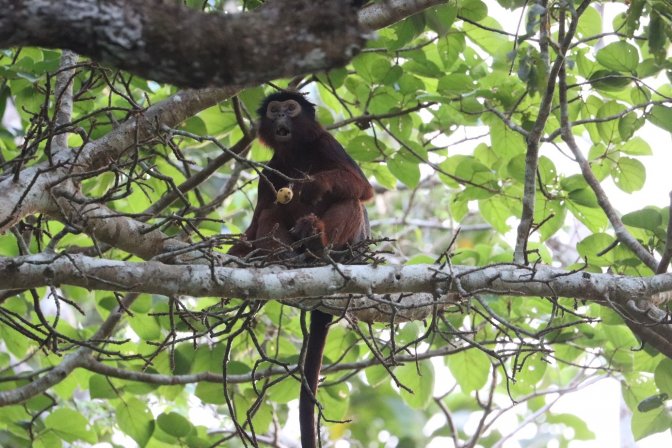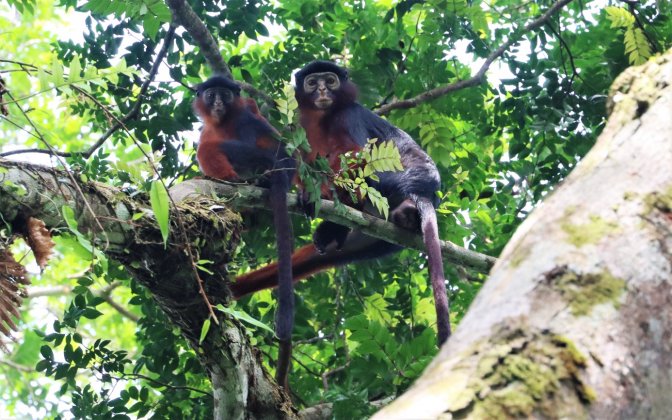Home / Guinean forests / Characteristics / The biodiversity / Species identity card / The Western red colobus
The Western red colobus
The Western red colobus (Piliocolobus badius) is part of a larger group of red colobuses distributed throughout tropical Africa, and this species is endemic to the forests of Upper Guinea. Its distribution extends from western Sierra Leone to central Côte d’Ivoire.
This colobus can be recognised by its reddish coat, dark brown to black back and greyish face; the long tail is red with a darker tip.
Species factsheet:
– Class: Mammal
– Order: Primates
– Family: Cercopithecidae
– Genus: Piliocolobus
– Species: badius
– Weight: 6 to 9 kg for females, 9 to 12 kg for males
– Size: around 60 cm without tail; tail: 65-75 cm
– Diet: young leaves and buds, seeds, fruits and flowers. In areas of competition with other monkeys, older leaves are also eaten, and much more rarely bark.
– Very social animal, forming groups of 30 to 90 individuals, with several adult males and females. The latter often groom other females and males. Their territories vary from 50 to 65 ha on average.
– Reproduction: females give birth after a 198-day gestation period. Two years generally elapse between births, which can take place at any time of year.
This monkey is sometimes hunted by chimpanzees, as well as by the Crowned Eagle (Stephanoaetus coronatus) and, probably, Shelley’s Owl (Bubo shelleyi). To better protect itself from its natural predators, it often mixes with other species such as the Diana monkey (Cercopithecus diana).
The Western red colobus is native to dense forests, but tolerates light forms of degradation and can be found in secondary forests, even in mosaics of savannah and abandoned fields; it also frequents mangroves.
However, this species is quite rare outside protected areas, as it is hunted. The species is therefore considered "endangered" by the IUCN.
Four landscapes in the PAPFor programme are home to the Western red colobus: Gola-Foya, Wologizi-Wonegizi-Ziama, Mount Nimba and Taï Grebo-Krahn - Sapo. The PAPFor programme is therefore important for the survival of this species, as it supports some 15 protected areas where the species is still found.



